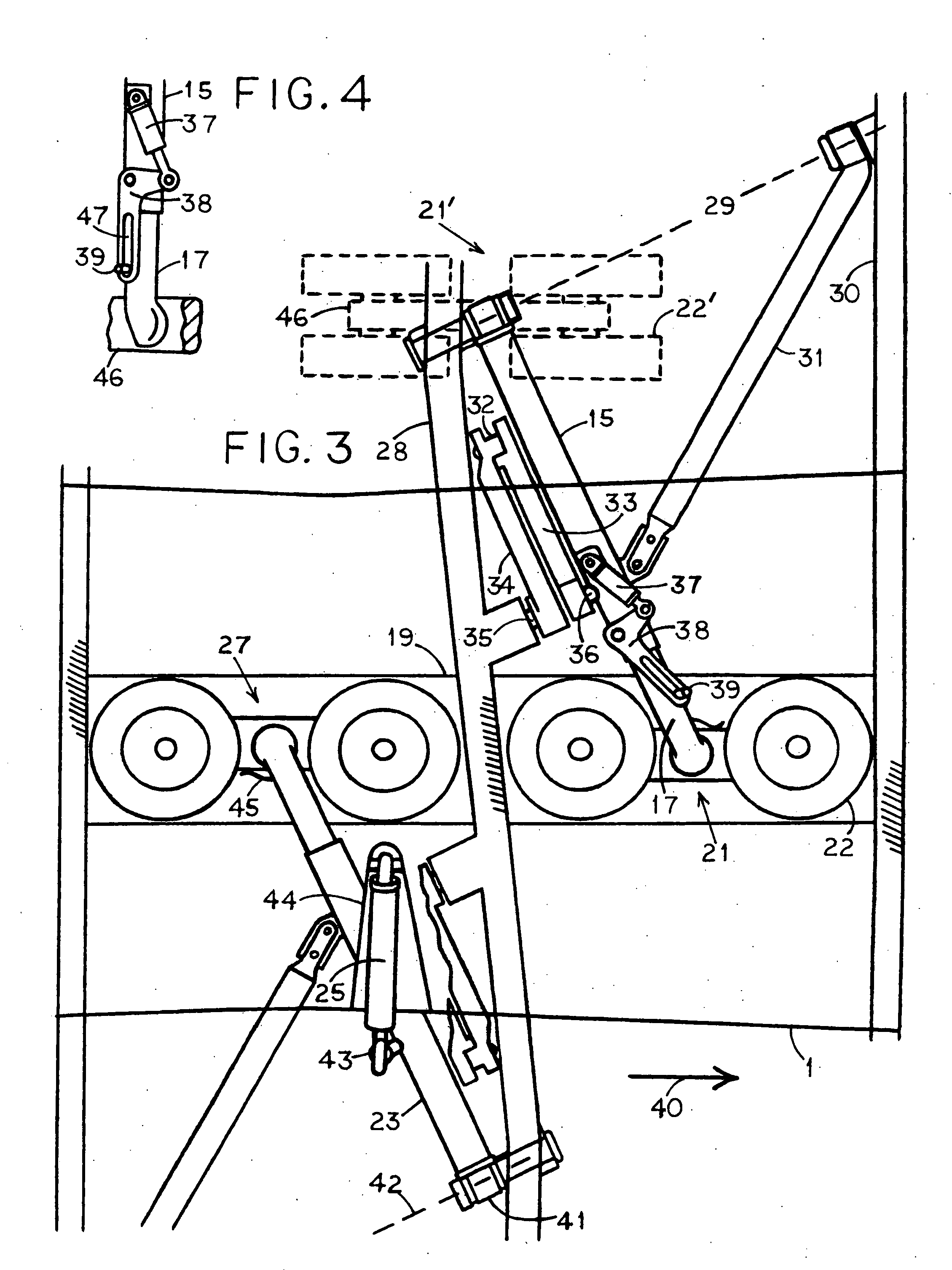Compression-lift aircraft
a technology of compression lift and aircraft, which is applied in the direction of airflow influencers, transportation and packaging, wing shapes, etc., can solve the problems of increasing lift, and achieve the effects of reducing shock wave, increasing lift, and reducing drag
- Summary
- Abstract
- Description
- Claims
- Application Information
AI Technical Summary
Benefits of technology
Problems solved by technology
Method used
Image
Examples
Embodiment Construction
[0026]FIG. 1 shows an airliner design intended to cruise efficiently at Mach 2. There is a fuselage 1, wings 3 and 7, and a vertical tail 4 for directional stability. It takes a lot of power to fly at Mach 2 so there are four large turbojet engines such as 6 housed two to an engine nacelle 8. Knife-edge 9 at the front of a nacelle 8 splits the intake air into halves, one of them going to feed engine 6. A similar nacelle 2 is found under other wing 3.
[0027]There has already been a Mach 2 airliner, the Concorde which was in airline service for two decades. The layout of our aircraft design is similar except that Concorde's long-chord delta wings have been replaced by swept-back ones 3 and 7. At the right, the end of fuselage 1 is configured as an elevator, whose leverage is maximum for its control. Fuselage 1 narrows at cutting plane A-A, an application of area-ruling which offsets some of the wave drag caused by the bulge of wing root 10. Area-ruling is a known technique which won't ...
PUM
 Login to View More
Login to View More Abstract
Description
Claims
Application Information
 Login to View More
Login to View More - R&D
- Intellectual Property
- Life Sciences
- Materials
- Tech Scout
- Unparalleled Data Quality
- Higher Quality Content
- 60% Fewer Hallucinations
Browse by: Latest US Patents, China's latest patents, Technical Efficacy Thesaurus, Application Domain, Technology Topic, Popular Technical Reports.
© 2025 PatSnap. All rights reserved.Legal|Privacy policy|Modern Slavery Act Transparency Statement|Sitemap|About US| Contact US: help@patsnap.com



